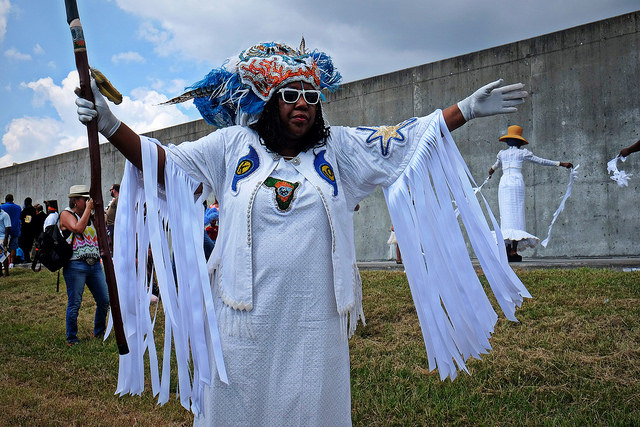
All photos: Laura Borealis
New Orleans observed the 10-year anniversary of Hurricane Katrina with a cacophony of sights, sounds and emotions that blurred the lines between art and politics, truth and contradiction, and life and death. While elected officials and the mainstream media focused heavily on the city’s “resilience,” activists on the ground were organizing around a different theme: resistance. In the lead up to the anniversary, racial justice groups held a summit and launched a website, www.katrinatruth.org, to remind the powers that be in Louisiana – and the rest of the country – that the city’s recovery efforts have mostly benefited white residents and prioritized private profit over people. Then came the second line parades. This is what resistance looks like in New Orleans.
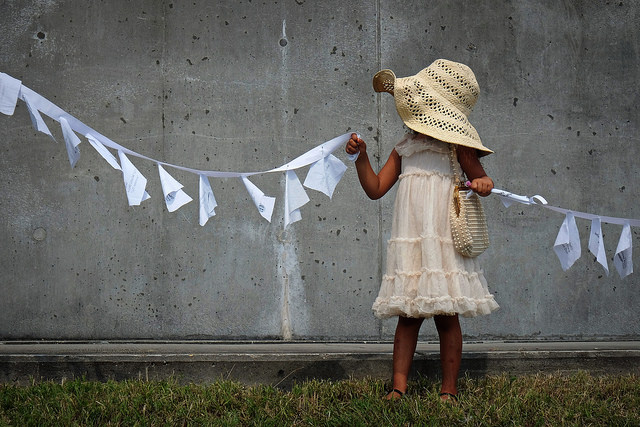
A girl prepares to perform with Black feminist artists in front of the levee wall in the Lower Ninth Ward during the memorial second line on August 29. The second line began where the levee wall failed during Katrina, releasing a torrent of water that left the historically Black neighborhood in ruins.

Performers with ECOHYBRIDITY, a collaboration of Black feminist artists who held a roaming “visual black opera” on the Katrina anniversary, perform at the levee wall during the second line. Many people who lived in the Lower Ninth War before Katrina have still not returned to their homes.
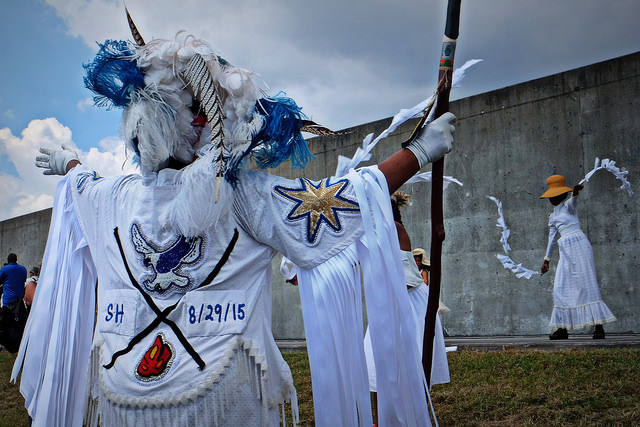
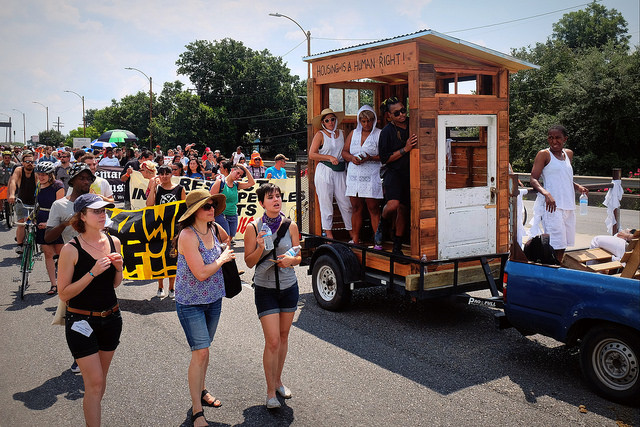
ECOHYBRIDITY constructed a mock house as a float that reads, “Housing is a human right.” Before Katrina, there were 12,270 public housing units available in New Orleans, and now there are only 2,006. More than 90 percent of the nearly 15,000 families currently on waiting lists for either public housing or Section 8 assistance are Black families, according to KatrinaTruth.org.
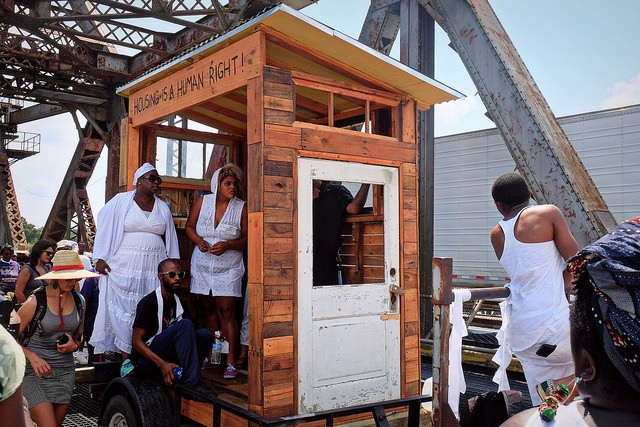
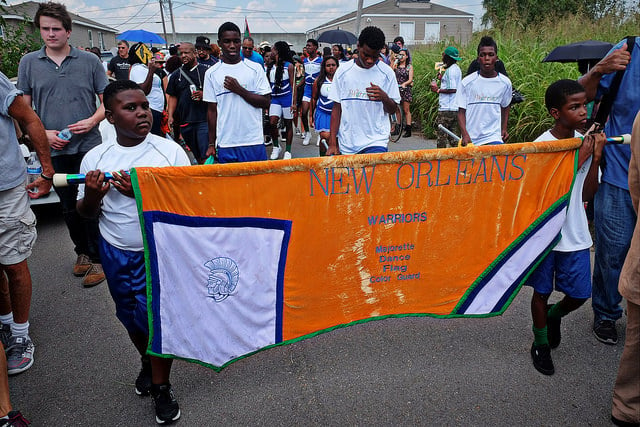
Youth march in the second line parade. At least 50 percent of Black children in New Orleans live in poverty, more than before Katrina.
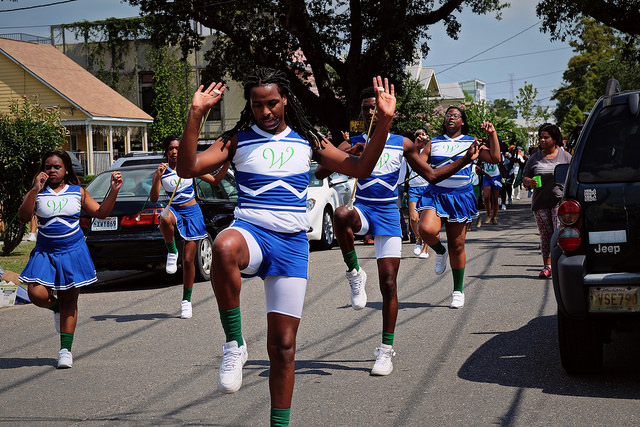
The Warriors, a youth dance crew and color guard, march in the second line parade. Many New Orleans schools were privatized after Katrina, and now 92 percent of students attend private charter schools. Advocates say harsh discipline polices at charter schools deny students equal access to education, and 15 charter schools in New Orleans have higher suspension rates the rest of the nation. In 2013, there were 46,625 out-of-school suspensions, more than the total number of students in the local school system.
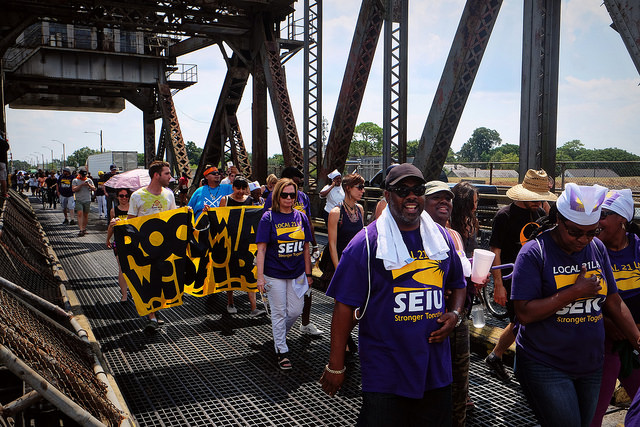
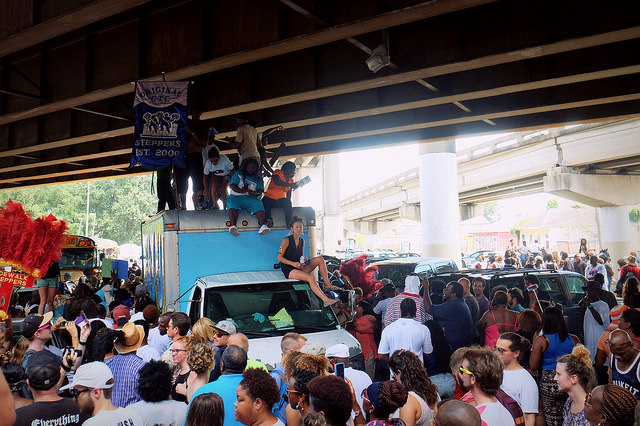
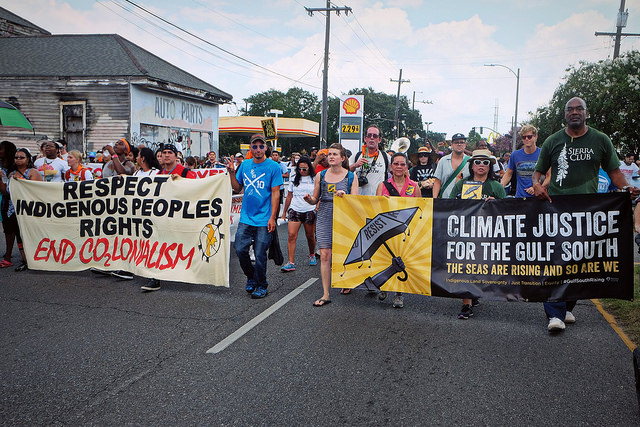
The Katrina memorial second line was more political than most second lines, as activists from New Orleans and across the country joined the parade.
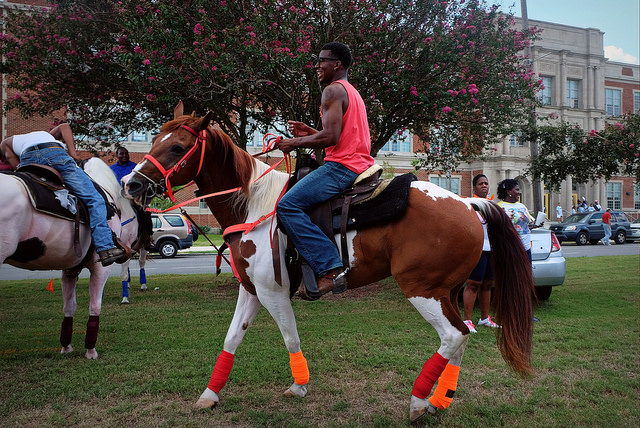
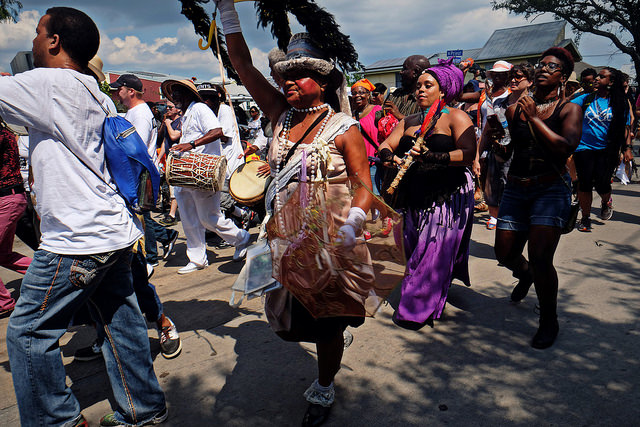
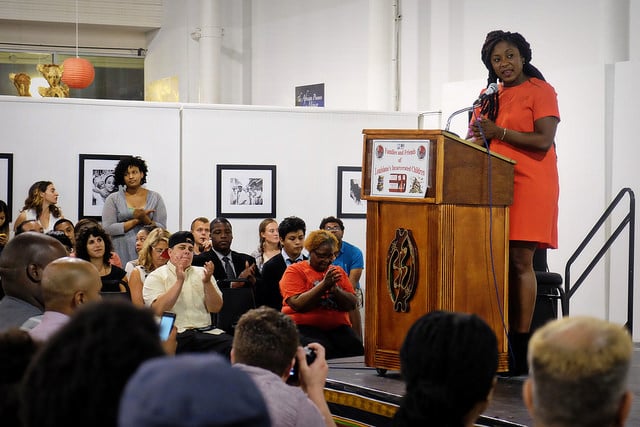
Alicia Garza, a founder of the Black Lives Matter movement, speaks at a racial justice summit held in New Orleans shortly before the Katrina anniversary.
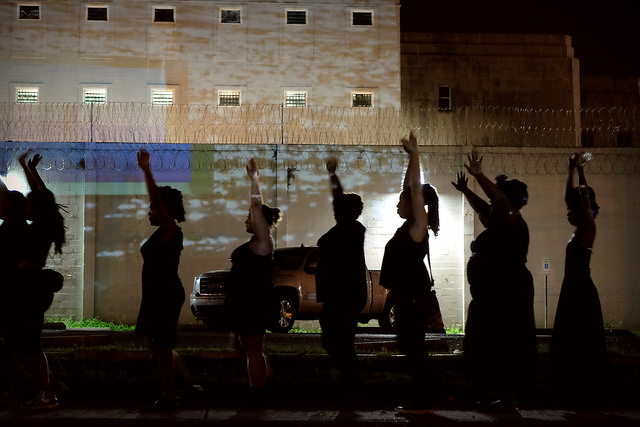
ECOHYBRIDITY performers march into position as prison resistance video is projected across the walls of the Orleans Parish Prison, the jail in New Orleans that became infamous for human rights abuses after Katrina. Jail officials have been tussling with the local government and the Justice Department over reforms ever since. There are five times as many Black inmates than white inmates in Louisiana prisons. The state’s white population is double that of the Black population. “I hope they can hear us,” an organizer said before raising a fist toward the jail.
We’re not backing down in the face of Trump’s threats.
As Donald Trump is inaugurated a second time, independent media organizations are faced with urgent mandates: Tell the truth more loudly than ever before. Do that work even as our standard modes of distribution (such as social media platforms) are being manipulated and curtailed by forces of fascist repression and ruthless capitalism. Do that work even as journalism and journalists face targeted attacks, including from the government itself. And do that work in community, never forgetting that we’re not shouting into a faceless void – we’re reaching out to real people amid a life-threatening political climate.
Our task is formidable, and it requires us to ground ourselves in our principles, remind ourselves of our utility, dig in and commit.
As a dizzying number of corporate news organizations – either through need or greed – rush to implement new ways to further monetize their content, and others acquiesce to Trump’s wishes, now is a time for movement media-makers to double down on community-first models.
At Truthout, we are reaffirming our commitments on this front: We won’t run ads or have a paywall because we believe that everyone should have access to information, and that access should exist without barriers and free of distractions from craven corporate interests. We recognize the implications for democracy when information-seekers click a link only to find the article trapped behind a paywall or buried on a page with dozens of invasive ads. The laws of capitalism dictate an unending increase in monetization, and much of the media simply follows those laws. Truthout and many of our peers are dedicating ourselves to following other paths – a commitment which feels vital in a moment when corporations are evermore overtly embedded in government.
Over 80 percent of Truthout‘s funding comes from small individual donations from our community of readers, and the remaining 20 percent comes from a handful of social justice-oriented foundations. Over a third of our total budget is supported by recurring monthly donors, many of whom give because they want to help us keep Truthout barrier-free for everyone.
You can help by giving today. Whether you can make a small monthly donation or a larger gift, Truthout only works with your support.